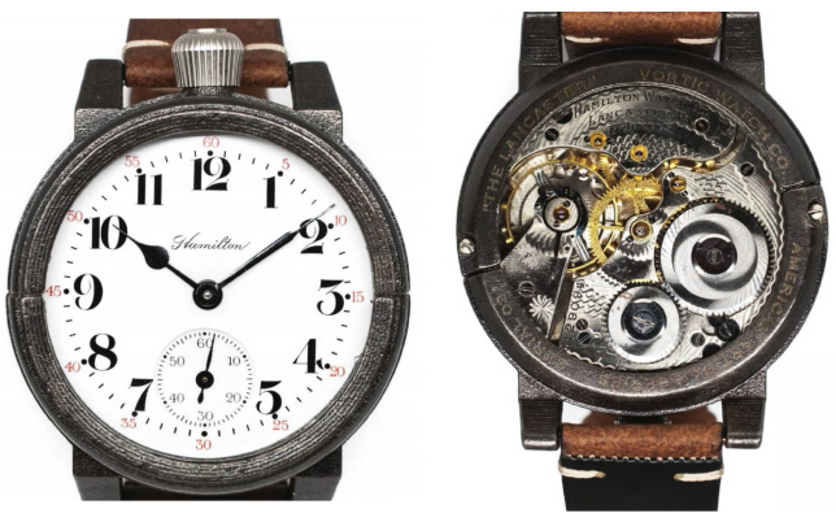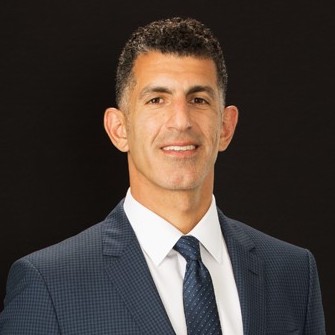“Companies seeking to ‘upcycle’ or reuse products made by others should…pay attention to labels or stamps identifying the product as rebuilt, refurbished, or repaired. Full and accurate disclosures are highly relevant to the analysis and can help mitigate the risks.”
Two recent decisions dealing with high-end watches illustrate the fine line between permissible and infringing modifications when the final product bears a trademark of the original maker. As the trend of “upcycling” or “creative reuse” continues to grow, entrepreneurs should be aware of the potential pitfalls in modifying the products of others.
Generally, the first sale or “exhaustion” doctrine protects a reseller of authentic goods from infringement liability—but only when the goods have not been materially altered in any manner and meet the trademark owner’s quality standards. There are, however, some circumstances where courts have found certain modifications to be permissible.
Repurposed Antique Watches Pass the Test
In September 2021, the Second Circuit sided with Vortic LLC and its founder Robert Thomas Custer, whose stated goal was to preserve a part of American history by re-purposing antique pocket watches made in American factories into one-of-a-kind wristwatches featuring clear backs that showcase the mechanical components and original engravings. Hamilton Int’l. Ltd. v. Vortic LLC, 13 F.4th 264 (2d Cir. 2021).
The watch line at issue, “The Lancaster,” prominently featured the “Hamilton” trademark on the original pocket watch face. Hamilton International Ltd., now a unit of the Swatch Group, has owned the “Hamilton” trademark since 1909 and manufactured pocket watches at its factory in Lancaster, Pennsylvania until 1969. Vortic used the original pocket watch face and mechanical movement, but added a wrist strap, case, and minor internal parts that were manufactured by Vortic or came from modern sources. The metal ring around the clear back cover read “Vortic Watch Co.” and “The Lancaster,” along with Vortic’s serial number for the watch. Each buyer received the watch with a booklet that displayed Vortic’s logo and described Vortic’s restoration process, as well as a “Vortic Watch Company Authentication Card” signed by the Vortic watchmaker who did the conversion.

Hamilton filed a trademark infringement suit, which culminated in a one-day bench trial. The district court in the Southern District of New York ruled for Vortic, relying on the factors set out by the Supreme Court in Champion Spark Plug Co. v. Sanders as well as the traditional likelihood of confusion factors.
In Champion, a manufacturer of spark plugs under the “Champion” brand sued a dealer of refurbished “Champion” plugs. Champion Spark Plug Co. v. Sanders, 331 U.S. 125, 130 (1947). The Supreme Court found the use of the “Champion” trademark by the refurbishing company permissible because the plugs were stamped with the words “Used” or “Repaired” which – according to the Court – “serve[d] the requirements of full disclosure.” The Supreme Court explained that while “inferiority is expected in most second-hand articles,” any “[i]nferiority is immaterial so long as the article is clearly and distinctively sold as repaired or reconditioned rather than as new.”
During the bench trial in Hamilton v. Vortic, the district court examined photographs of the watch and concluded that a consumer would view The Lancaster as a restored antique rather than an entirely new product. The court gave strong weight to the “full disclosure” factor under Champion, finding that Vortic’s advertisements and marketing materials, as well as the watch itself, provided full disclosure about the conversion process. The District Court then turned to the traditional trademark infringement factors under Polaroid, finding that lack of actual confusion, the defendant’s good faith, and the sophistication of the buyers were the most relevant in this case. The court credited Custer’s testimony, concluding that “he did not intend to cause consumer confusion but rather sought to ‘preserve American history’ by salvaging and restoring the hearts of antique pocket watches.” Hamilton Intl. Ltd. v. Vortic LLC, 486 F. Supp. 3d 657, 667 (S.D.N.Y. 2020), aff’d, 13 F.4th 264 (2d Cir. 2021). In addition, the court found the target consumers to be sophisticated, as the custom watches were expensive, and that consumers would seek out the information provided by Vortic (such as on its website and in the booklet provided with the watches) in making such an investment. Finally, the court found no evidence of actual confusion, discounting the only evidence that Hamilton offered at trial — an email inquiry about a vintage Hamilton watch—because of concerns about the reliability of that email.
Hamilton argued that, unlike in Champion, The Lancaster watch did not have a stamp that identified it as refurbished or repaired, and thus could be later resold without the requisite disclosures. But the district court concluded that the “overall design and the engravings, rather than a particular stamp, convey full disclosure with sufficient clarity and conspicuousness.” The court cited a California district court opinion denying a preliminary injunction to Ford in a suit brought against a stretch limo converter, finding that the modifications to Ford’s vehicles were “apparent” and there was no evidence that the public would believe the conversions were made by Ford.
On appeal to the Second Circuit, a unanimous panel found no clear error in the district court’s findings of fact and conclusion that Hamilton did not meet its burden of proving likelihood of confusion — confirming that the plaintiff bears the burden of proving likelihood of confusion even when Champion factors are implicated. The appellate court also clarified that there is “no hard and fast order” in which both Champion and traditional likelihood of confusion factors are to be applied in the infringement analysis. Hamilton Intl. Ltd. v. Vortic LLC, 13 F.4th 264, 275 (2d Cir. 2021).
Hamilton pointed to three cases from other circuits dealing with modified Rolex and Bulova watches to argue that no disclosures could be adequate when watches are “extensively modified.” In all three cases, courts applied Champion’s reasoning to find that alterations made to the watches (which included the addition of diamonds or replacements of cases) resulted in new products, and that no disclosure could adequately dispel the likelihood of consumer confusion stemming from these modifications. But the Second Circuit distinguished the facts of those cases, finding that Vortic’s disclosures were accurate and extensive, and under the circumstances, adequate.
Modified Luxury Watches Fall Short
In contrast to the outcome in Vortic, in Rolex v. BeckerTime LLC, a district court in Northern District of Texas recently blocked a company from selling modified Rolex watches, but refused to award a disgorgement profits because Rolex allegedly knew about the watches for 10 years before filing suit. Rolex Watch U.S.A., Inc. v. BeckerTime, LLC, 4:20-CV-01060, 2022 WL 286184 (N.D. Tex. Jan. 31, 2022). BeckerTime, founded by Matthew and Carolyn Becker, described its business as “reselling vintage Rolex watches, making repairs to Rolex watches, and selling refurbished Rolex watches.” Rolex purchased two watches from BeckerTime as part of an investigation, and found that BeckerTime added diamonds as hour markers and in the process of refurbishing dials, BeckerTime stripped the dial down to bare metal and then reapplied Rolex’s trademarks. BeckerTime also sometimes combined aftermarket bands or straps of allegedly inferior quality with genuine Rolex clasps or buckles displaying Rolex’s trademarks. BeckerTime provided a comparison price for the watches labeled as “New MSRP (if all factory),” however, Rolex never sold watches matching the modified watches, thus, it argued there could be no true “MSRP” price. BeckerTime provided an “Authenticity Guarantee” and held itself out as a “Certified PreOwned Watch Dealer” with a “Rolex Certified Master Watchmaker.” However, Rolex, which operates its own watch service centers and allows Official Rolex Jewelers to operate licensed service centers, never certified BeckerTime, its watchmaker, or any of the watches that BeckerTime sold. In addition, BeckerTime sometimes included the phrase “Superlative Chronometer Officially Certified,” a phrase used by Rolex to signify the watch movement met certain time accuracy standards at the time of manufacture, but BeckerTime did not confirm whether its watches meet those accuracy standards. As a result, the court found that BeckerTime mislabeled watches to appear more valuable than they are and the statements in its disclosures were not fully accurate.
The district court pointed out that BeckerTime received inquiries from customers regarding the authenticity of its watches, as well as complaints about quality and the non-genuine Rolex parts, which led the court to conclude that BeckerTime’s disclosures were inadequate. Although the product descriptions on BeckerTime’s website indicated that the replacement parts were not genuine Rolex parts, that BeckerTime is not affiliated with Rolex, and that the alterations will void the Rolex warranty, the court found that the words “GENUINE ROLEX” were more prominent than any disclosures. The court also observed that because BeckerTime watches may be resold without the accompanying disclosures, there would be no markings indicating BeckerTime as the source. The court concluded that BeckerTime intended to benefit from Rolex’s brand recognition, but there was insufficient evidence to show intent to infringe on Rolex’s trademarks.
Ace in the Hole for Upcycled Golf Balls
Case law on upcycled products is fairly sparse, however, the Federal Circuit reached a decision similar to Vortic in affirming a denial of a preliminary injunction against a reseller of golf balls. Acushnet Company, which makes and sells golf balls under the trademarks “Titleist,” “Acushnet,” “Pinnacle,” and “Pro V1,” sued Nitro Leisure Products LLC, which sold both used and “refurbished” golf balls. Nitro’s refurbishing process included cosmetically treating the balls by removing the base coat of paint, the clear coat layer, and the trademark and model markings, and then repainting the balls, adding a clear coat, and reaffixing the original manufacturer’s trademark. Nitro Leisure Products, L.L.C. v. Acushnet Co., 341 F.3d 1356, 1358 (Fed. Cir. 2003). Nitro also applied the legend “USED & REFURBISHED BY SECOND CHANCE” or “USED AND REFURBISHED BY GOLFBALLSDIRECT.COM,” referring to its business divisions, and packaged them in containers that included a disclaimer, “ATTENTION USED/REFURBISHED GOLF BALLS,” with information about its process and possible performance variations of the refurbished golf balls, as well as explanation that the product was not endorsed or approved by the original manufacturer. The two-judge majority of the Federal Circuit panel (where the denial of preliminary injunction was appealed because the case included patent infringement claims), analogized the facts of the case to the facts of Champion and agreed with the district court’s conclusion that Acushnet had not presented sufficient evidence to support its claim that the golf balls are so extensively repaired that they cannot be truly labeled with the original trademarks. Judge Newman dissented, however, writing that “[w]hen goods have lost their identity and their quality, the trademark owner cannot be forced to permit re-application of the original trademark to the doctored product.”
Disclose Fully, Act Swiftly
What conclusions may be drawn from these cases? Companies seeking to “upcycle” or reuse products made my others should obtain legal advice and pay attention to labels or stamps identifying the product as rebuilt, refurbished, or repaired. Full and accurate disclosures are highly relevant to the analysis and can help mitigate the risks under the Champion standard, and provide evidence of good faith intent. Evidence that the final product is of high quality and will not be the target of consumer complaints may also be relevant. In another line of cases, customizations of products previously purchased by a customer have been ruled to be permissible where the purchaser’s customized product is not intended for further sale. See Cartier a Division of Richemont North America, Inc. v. Aaron Faber, Inc., 396 F. Supp. 2d 356, 77 U.S.P.Q.2d 1572 (S.D. N.Y. 2005) (granting preliminary injunction against making significant changes to Cartier watches, but noting that the injunction does not “prevent them from providing customization.
Brand owners who find their products resold, conversely, should be mindful of potential for consumer confusion, and keep track of any such inquiries, and act swiftly, to avoid a finding of unreasonable delay. While the Vortic decision is somewhat of an outlier in a series of prior cases on watch modifications, it remains to be seen how it will be applied in cases dealing with upcycled or restored goods in other contexts.

![[IPWatchdog Logo]](https://ipwatchdog.com/wp-content/themes/IPWatchdog%20-%202023/assets/images/temp/logo-small@2x.png)


![[Advertisement]](https://ipwatchdog.com/wp-content/uploads/2024/04/UnitedLex-May-2-2024-sidebar-700x500-1.jpg)
![[Advertisement]](https://ipwatchdog.com/wp-content/uploads/2024/04/Artificial-Intelligence-2024-REPLAY-sidebar-700x500-corrected.jpg)
![[Advertisement]](https://ipwatchdog.com/wp-content/uploads/2024/04/Patent-Litigation-Masters-2024-sidebar-700x500-1.jpg)

![[Advertisement]](https://ipwatchdog.com/wp-content/uploads/2021/12/WEBINAR-336-x-280-px.png)
![[Advertisement]](https://ipwatchdog.com/wp-content/uploads/2021/12/2021-Patent-Practice-on-Demand-recorded-Feb-2021-336-x-280.jpg)
![[Advertisement]](https://ipwatchdog.com/wp-content/uploads/2021/12/Ad-4-The-Invent-Patent-System™.png)






Join the Discussion
No comments yet.